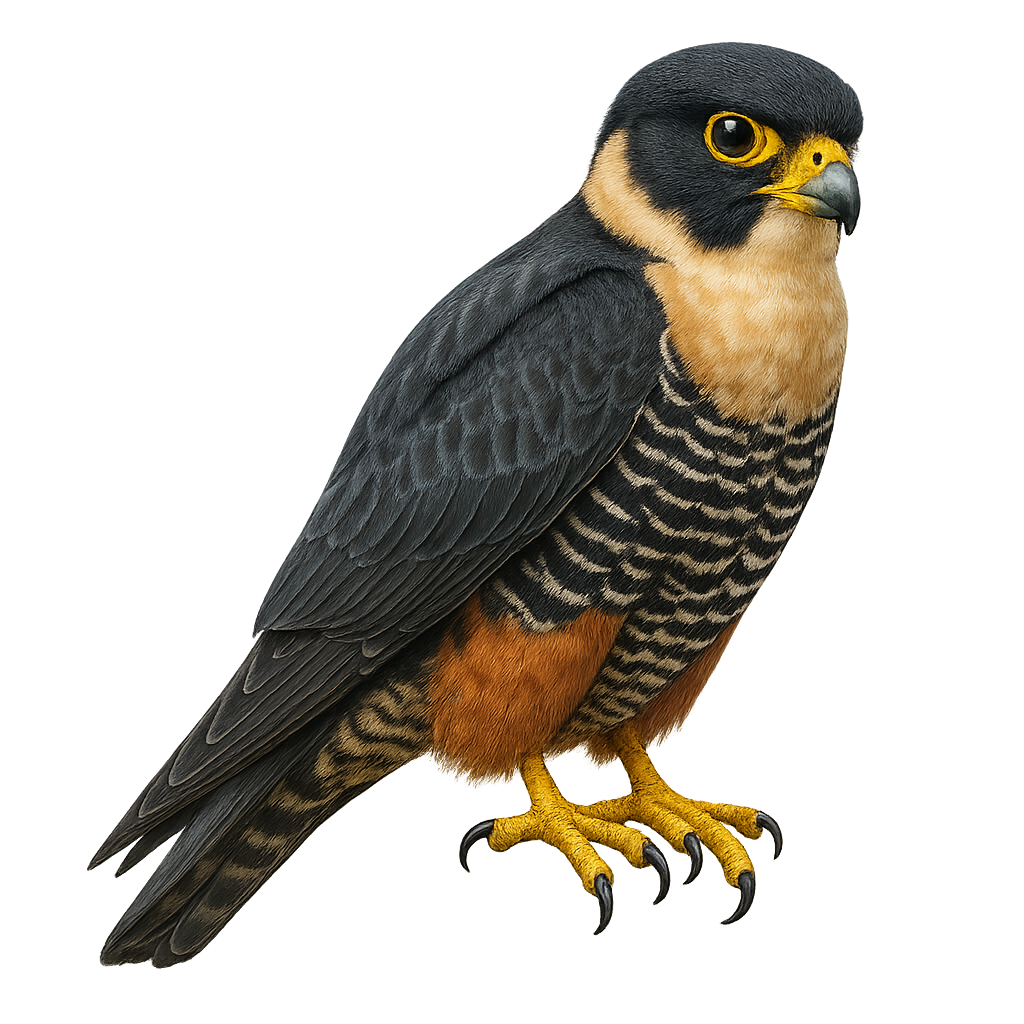Your wildlife photography guide.
Explore the bat falcon in detail, study its behavior, prepare your shots.
Where to observe and photograph the bat falcon in the wild
Learn where and when to spot the bat falcon in the wild, how to identify the species based on distinctive features, and what natural environments it inhabits. The WildlifePhotographer app offers tailored photography tips that reflect the bat falcon’s behavior, helping you capture better wildlife images. Explore the full species profile for key information including description, habitat, active periods, and approach techniques.
Bat Falcon
Scientific name: Falco rufigularis

IUCN Status: Least Concern
Family: FALCONIDAE
Group: Birds
Sensitivity to human approach: Suspicious
Minimum approach distance: 10 m
Courtship display: February to March
Incubation: 28-32 jours
Hatchings: March to May
Habitat:
Tropical forests, urban areas, savannas
Activity period :
Primarily active during the day, with peak activity in the morning and late afternoon.
Identification and description:
The Bat Falcon is a small, elegant raptor, recognizable by its distinctive rufous throat and contrasting black and white plumage. It primarily inhabits the dense tropical forests of Central and South America, where it hunts mainly birds and bats in flight. This falcon is an agile and fast hunter, often seen soaring high in the sky before diving onto its prey with remarkable precision. Although primarily diurnal, it can sometimes be active at dusk. Its ability to adapt to various habitats, including urban areas, makes it a fascinating bird to observe for ornithologists and nature enthusiasts.
Recommended lens:
400mm – adjust based on distance, desired framing (portrait or habitat), and approach conditions.
Photography tips:
To photograph the Bat Falcon, it is advisable to use a 400mm lens or longer to capture detailed images from a distance. Look for it in tropical forests or on the edges of urban areas. Be patient and discreet to avoid scaring it away. The best photo opportunities often occur early in the morning or late in the afternoon when the light is soft and the falcon is active.
The WildlifePhotographer App is coming soon!
Be the first to explore the best nature spots, track rutting seasons, log your observations, and observe more wildlife.
Already 1 439 wildlife lovers subscribed worldwide

